In the previous blog I talked about how EXA-Arcadia was rereleasing / remastering Daraku Tenchi: The Fallen Angels, and Rage of the Dragons W for the arcade. I mentioned “the godfather” of brawling games was Double Dragon in 1987. It had inspired the creation of Rage of the Dragons, a fighting game from 2002. A little more on that in just a moment. Technōs essentially launched the brawling game genre, and influenced the fighting game genre as well. Despite being important to game history they were incapable of creating a sequel that was as influential as the first game. Not long after Capcom released
Final Fight, Konami released
Vendetta, and Sega released
Streets of Rage. Each was essentially a better version of Double Dragon. In fact post 1989 there were dozens of great titles which were superior to Double Dragon in every regard.

The
sequels to Double Dragon failed because in my book they did not innovate the format. The studio played it safe, and made only marginal changes to the game. Worse yet they looked for ways to make arcade players pay more money through micro transactions. In the early ‘90s the arcade market had shifted. Fighting games were the hottest titles, and brawlers had taken a back seat. The biggest hits of the entire decade all came out within three years; Street Fighter II (1991), Fatal Fury (1991), Art of Fighting (1992), Mortal Kombat (1992), Virtua Fighter (1993), Tekken (1994), Primal Rage (1994), Vampire / Darkstalkers (1994), and Killer Instinct (1994). By the middle of the decade it was hard to break in with a new fighter. That was exactly when Technōs decided to throw their hat into the ring. Had Technōs released a Double Dragon fighting game four years earlier then it would be more relevant today.
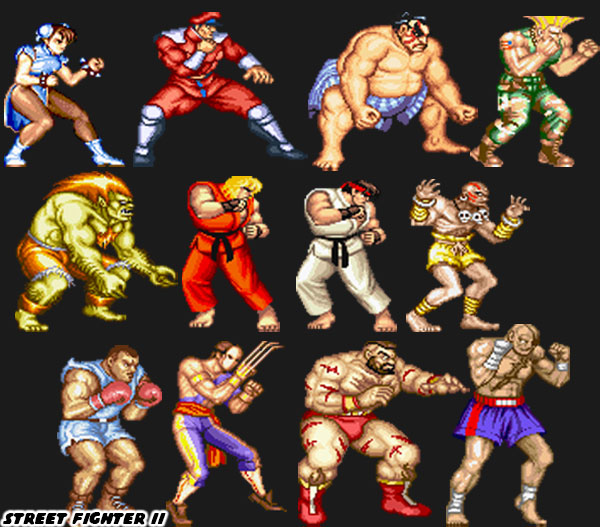
The mistakes of Technōs could be understood through their fighting game. Being slow to market was one of the biggest issues. Double Dragon (the fighting game) was similar to the hundreds of other titles out in 1995. There were two main characters Jimmy, and Billy Lee. They studied the fictional Sousetsuken “Twin Sever Fist” style of fighting. The Japanese, and western lead characters with their own trademark fighting style had also been seen with Ken / Ryu (Street Fighter), Kazuya / Paul (Tekken), Akira / Jacky (Virtua Fighter), Ryo / Robert (Art of Fighting). Granted Billy, and Jimmy were the ones that started the trend. Double Dragon also had the token big guy, girl, strange character, etc which had been pulled from the franchise. The sprites were large, and colorful. They were not unlike the sprites, and cast of Street Fighter II which was something that other studios had also poached.
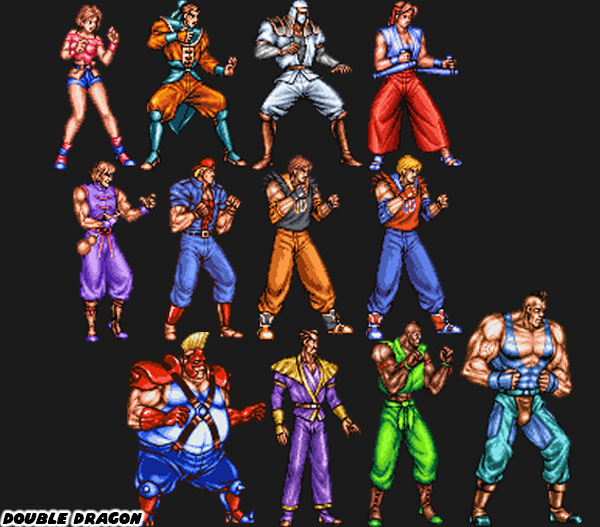
Technōs didn’t realize their visual presentation was becoming dated. It took them too long to bring a game to market. Having a recognizable brand, and going through the motions was not enough. Other studios were trying out bold new ideas in the early ‘90s. In order to stand out from the crowd it wasn’t enough to have bigger, or slightly more colorful sprites. Sega had polygon models, Namco had textured polygons. Rare had SGI workstations creating sprites that looked like computer graphics. Midway used live action footage, and Atari used stop motion figures. On top of everything the popular aesthetic, the art style was shifting. There was a blending of western comic book formats, and Japanese anime in a new sprite art form. Capcom designer
BENGUS broke the mold in 1995 with Street Fighter Zero / Alpha.
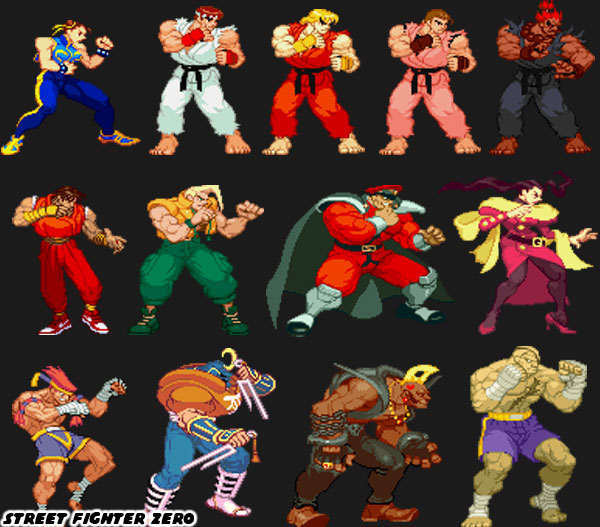
The game was amazing given that a number of the staff that worked on Street Fighter II left Capcom to join SNK,a nd ARIKA. Noritaka Funamizu, and the remaining team at Capcom was able to create something amazing with a bare bones staff in a relatively short amount of time. The large cartoonish sprites designed by BENGUS were revolutionary. The entire industry had to respond. I would argue that SNK’s first counter were the sprites featured in
Real Bout: Fatal Fury Special from 1997. The game featured sprites which were touched up, and made more colorful from those featured in the previous Real Bout game from 1995. That was a small step for their art department. The actual response to Street Fighter Zero was seen in Garou Mark of the Wolves. The fan favorite game from 1999 had a style, and presentation that was close to BENGUS, but still had the classic SNK fingerprints all over it. The sprites, and character designs that Technōs featured in Double Dragon in 1995 simply didn’t capture audiences in the ways that the Capcom sprites did. A few years later there would be another chance to get it right.
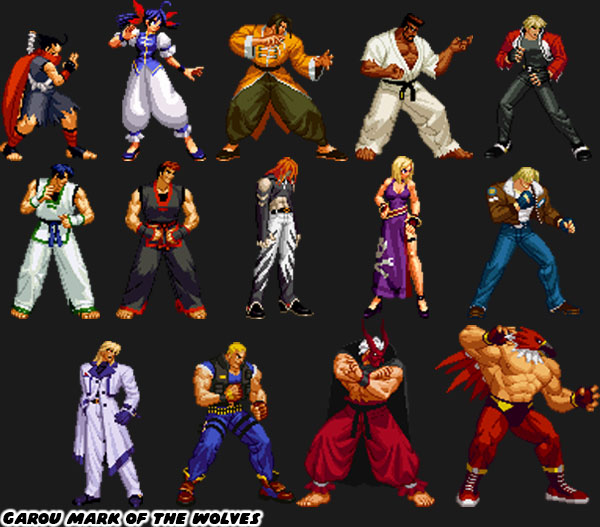
The developers at Noise Factory was not happy with the version of Daraku Tenchi: The Fallen Angels that was published by Psikyo in 1998. They did not have the time, or money to develop an upgrade kit either. Arcade business was slowing down globally at the end of the ‘90s. Any arcade title that was published had to be more polished right out the gate, rarely did any studio have a chance to release upgrades for arcade operators. While they couldn’t go back, and add more content to the Fallen Angels, they did think there was a chance to make a sequel to the 1995 fighting game inspired by the ill-fated live action movie.
The history of Rage of the Dragons was unique. It was created by Noise Factory, and BrezzaSoft for the NEO GEO.
BreezaSoft was founded by Eikichi Kawasaki, who also founded SNK. What made it truly unique was that it was designed by the Mexican studio Evoga.
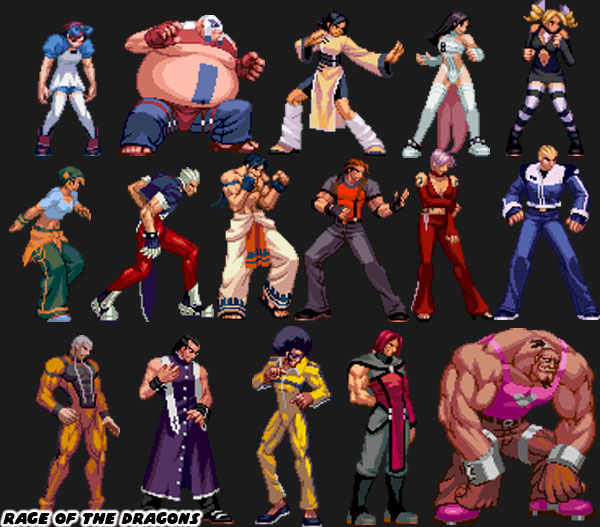
Unfortunately they couldn’t get the rights to the Double Dragon characters or name. Million was made up of former Technōs employees, they were sitting on the rights, and didn’t seem eager to strike a deal. To make negotiations more difficult SNK was going through a bankruptcy at around the same time. South Korean developers Eolith were hired to help finish a few projects. Steel Hearts team members helped SNK as well. They figured out that they could move forward with their own game if they slightly changed the names. Billy, and Jimmy’s last name went from Lee to Lewis. The girlfriend Marion became Mariah, Abobo became Abubo, etc. This didn’t stop Million from filing a legal challenge. Fans of the franchise could tell what this new fighting game was actually based on. To set it apart from the earlier game it was made a tag-team fighter. Visually the team at Evoga was able to find a perfect blend of the style of Street Fighter Zero, and Garou Mark of the Wolves. In just about every regard it was superior to the fighter from ’95. Sadly Rage of the Dragons just didn’t have the balance, and game play of the more popular titles. It was rarely seen in arcades, and didn’t build too much of a following.
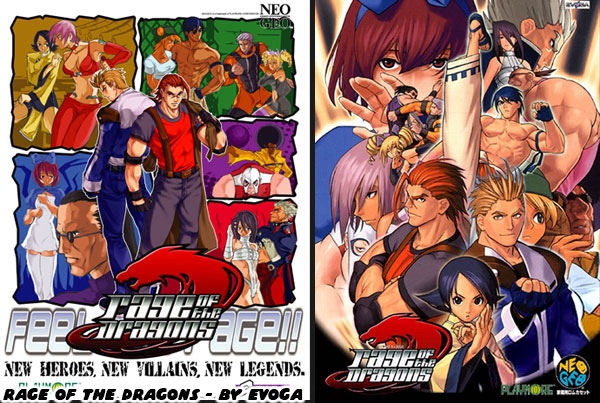
I was happy that EXA-Arcadia was going to give the titles by Steel Hearts another go. I hoped that the developers would reunite to add some polish, and perhaps add a few more features to the games. Rollback anyone? Maybe, just maybe this would help them get to modern consoles sooner, rather than later. Of course I want to know if you played any of the Steel Hearts games. Or did you play any of the classic Double Dragon games? Did you have a favorite? I’d like to read about it in the comments section. As always if you would like to sponsor me
please visit my Patreon page and consider donating each month, even as little as $1 would help make better blogs and even podcasts!














No comments:
Post a Comment